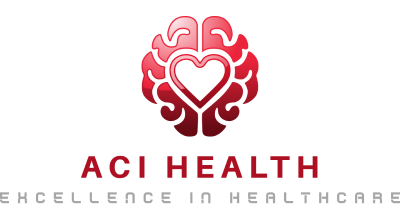ACI Health utilizes our Gold Seal Joint Commission Accreditation (JCA) processes to make sure we are providing world class Healthcare Transformation Solutions. Healthcare staffing is one of the critical aspects of the healthcare industry, ensuring that medical facilities are adequately staffed with qualified professionals to provide high-quality patient care.
Importance of Healthcare Staffing
Quality Patient Care
Adequate staffing levels directly correlate with the quality-of-care patients receive. Insufficient staffing can lead to increased workloads for healthcare providers, resulting in burnout and diminished patient care.
Regulatory Compliance
Healthcare facilities must comply with various regulations and standards set by governing bodies. Effective staffing helps ensure these standards are met, minimizing legal risks and enhancing operational efficiency.
Cost Efficiency
Proper staffing reduces the likelihood of costly errors, minimizes overtime expenses, and improves overall productivity. Efficient staffing solutions can lead to significant cost savings for healthcare organizations.
Staff Satisfaction and Retention
An adequately staffed facility fosters a better work environment, leading to higher job satisfaction among staff. This reduces turnover rates and the associated costs of hiring and training new employees.
Key Components of Healthcare Staffing
- Staffing Models
- Recruitment Strategies
- Credentialing and Compliance
- Workforce Management Tools
Permanent Staffing: Hiring full-time employees who are integral to the organization.
Temporary Staffing: Utilizing agency staff or locum tenens professionals to fill short-term needs.
Travel Nurses: Engaging nurses who work on a temporary basis in different locations, addressing staffing shortages in specific areas.
Job Postings: Utilizing online job boards and social media to attract candidates.
Networking: Leveraging professional networks and associations to find qualified candidates.
Referral Programs: Encouraging current employees to refer candidates, often with incentives.
Ensuring that all staff have the necessary certifications, licenses, and training to meet regulatory requirements and provide safe patient care.
Implementing technology solutions for scheduling, performance tracking, and communication to streamline staffing processes.
Challenges in Healthcare Staffing
- Staff Shortages: A growing shortage of healthcare professionals, particularly nurses and specialists, poses significant challenges. Factors contributing to this include an aging workforce and increased demand for healthcare services.
- High Turnover Rates: The healthcare industry often experiences high turnover, particularly among nursing staff. This can be exacerbated by burnout, job dissatisfaction, and competitive job markets.
- Budget Constraints: Many healthcare organizations face financial limitations, making it difficult to hire and retain sufficient staff.
- Seasonal Fluctuations: Certain times of the year may see increased patient volumes (e.g., flu season), requiring flexible staffing solutions to manage the influx.


Best Practices for Effective Healthcare Staffing
- Develop a Staffing Plan: Create a comprehensive staffing plan that outlines current staffing levels, projected needs, and strategies to address gaps.
- Utilize Technology: Implement staffing and scheduling software to optimize workforce management and improve communication among staff.
- Enhance Employee Engagement: Foster a positive work culture that values employee input, provides opportunities for professional development, and recognizes achievements.
- Monitor and Evaluate: Regularly assess staffing levels and employee performance. Use metrics to evaluate the effectiveness of staffing strategies and make adjustments as necessary.

